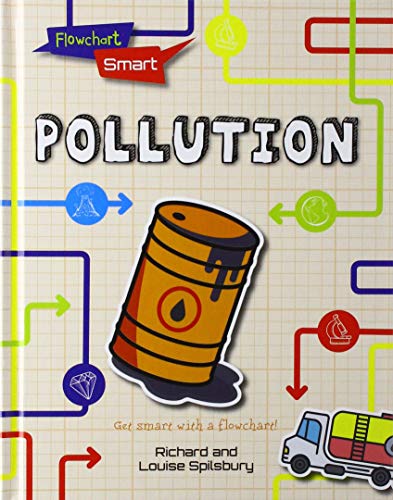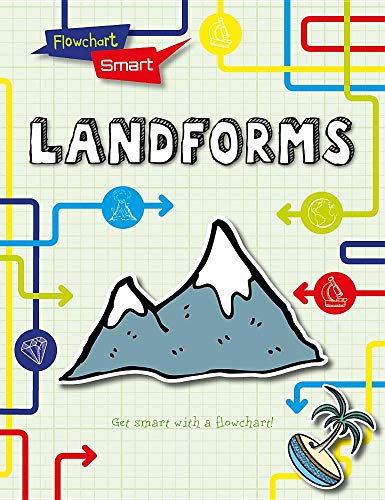-
The Science of the Digestive System
Louise A Spilsbury, Richard Spilsbury
Library Binding (Gareth Stevens Pub, Aug. 15, 2017)Explores the human digestive system using simple flowcharts to break down difficult concepts into accessible chunks. W
W
-
The Science of the Senses
Louise A Spilsbury, Richard Spilsbury
Library Binding (Gareth Stevens Pub, Aug. 15, 2017)Fun graphics and easy-to-comprehend language teach young readers about the workings of the sensory systems in the human body. Includes glossary and flowcharts that emphasize key concepts. W
W
-
Pollution
Richard Spilsbury, Louise Spilsbury
Library Binding (Gareth Stevens Pub, Jan. 15, 2019)One of the ways disease spreads in developing countries is through polluted water. This topic is a serious one for young readers to understand. In this book, the issues of pollution are explained in age-appropriate detail, complete with full-color photographs of air, land, and water pollution. In addition, each engaging topic concludes with a helpful flowchart to review how acid rain works, how bacteria enter drinking water, and the ways algal blooms form. This volume is a great resource for both science and social studies students learning to understand the importance of conservation and respect for the world around us. Y
Y
-
Landforms
Richard Spilsbury, Louise Spilsbury
Paperback (Gareth Stevens Pub, Jan. 15, 2019)Can land form where there wasn't any before? What about valleys and canyons? Through accessible language and colorful, fun flowcharts, readers learn the answers to these questions and more in this book. From how the continents arrived where they are today to how volcanoes form islands, the main text is full of incredible, and Earth science curriculum-supporting, knowledge for curious readers to discover. Full-color photographs accompany the text to take readers to the tops of mountains, the ocean coast, and deep into the Grand Canyon. T
T
-
The Science of the Brain
Richard Spilsbury, Louise Spilsbury
Library Binding (Gareth Stevens Pub, Aug. 15, 2017)Explores the human brain using simple flowcharts to break down difficult concepts into accessible chunks. T
T
-
The Science of Heat
Angela Royston
Paperback (Gareth Stevens Pub, Jan. 15, 2016)Heat can do some amazing things, like turn solids into liquids and liquids into gases. But how do these changes happen? This book helps readers understand how heat changes matter, what causes things to burn, and how these changes impact a vast number of objects in our world. Flowcharts filled with vivid photographs and interesting fact boxes visually bring to life the concepts of heat and the changing states of matter, turning readers into eager scientists! T
T
-
The Science of the Lungs and Respiratory System
Louise A Spilsbury, Richard Spilsbury
Paperback (Gareth Stevens Publishing, Aug. 15, 2017)How does oxygen reach our cells? What does our body do with the carbon dioxide it produces? Each breath we take demonstrates the marvel of the human lungs and respiratory system. This accessible book gives inquisitive readers an inside look at this essential bodily function. Engaging graphics and concise language create a reader-friendly experience that will attract even those who are reluctant to study science materials. Fun, easy-to-follow flowcharts summarize key concepts at the end of each chapter, ensuring that readers are able to visualize and retain essential information. This unique, visually rich approach to learning will make this book stand out in any library. W
W
-
The Science of Sound
Louise Spilsbury
Paperback (Gareth Stevens Pub, Jan. 15, 2016)Sound produces some of the greatest joys in our lives. From the music we love to the mere sound of laughter, the vibrations our ears pick up play a major role in our life experience. This book shows readers just what sound is, how it travels, and how our ears understand the sounds that surround us all. Innovative flowcharts throughout the book give readers a fun alternative to plain text, showing the science of sound with vibrant colors and interesting fact boxes. T
T
-
The Science of Deserts
Louise A Spilsbury
Paperback (Gareth Stevens Publishing, Jan. 15, 2020)There are many kinds of deserts, and not all are hot and sandy. In fact, there's a desert in Antarctica! This eye-opening book takes readers into various deserts around the world where they'll learn about the incredible adaptations that make desert life possible. They'll also discover much about desert food webs and the interactions that plants and animals depend on to survive in this ecosystem. Flowcharts help crystalize new concepts, such as how carrion beetles are the cleaning machines of the desert. There's plenty of similar lively facts and vivid photographs of wildlife in action to keep readers captivated by this fascinating habitat. T
T
-
The Water Cycle
Richard Spilsbury, Louise Spilsbury
Paperback (Gareth Stevens Pub, Jan. 15, 2019)There is only a certain amount of water on Earth at all times, and it's the same water that's been on Earth for millions of years. That's because of the water cycle. This book explains the major parts of the water cycle, including precipitation and how water is stored on Earth, through both clear, concise main text and colorful, helpful flow charts. Including key subjects to supplement the Earth science curriculum, the main text covers water power, the importance of water to life, and how water is recycled today. T
T
-
The Water Cycle
Richard Spilsbury, Louise Spilsbury
Library Binding (Gareth Stevens Pub, Jan. 15, 2019)There is only a certain amount of water on Earth at all times, and it's the same water that's been on Earth for millions of years. That's because of the water cycle. This book explains the major parts of the water cycle, including precipitation and how water is stored on Earth, through both clear, concise main text and colorful, helpful flow charts. Including key subjects to supplement the Earth science curriculum, the main text covers water power, the importance of water to life, and how water is recycled today. T
T
